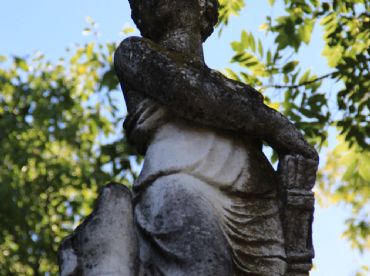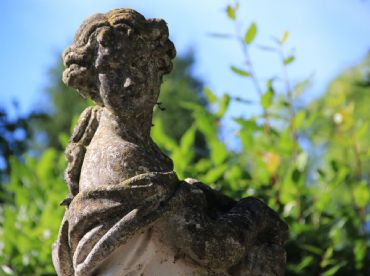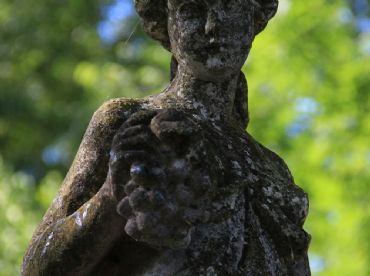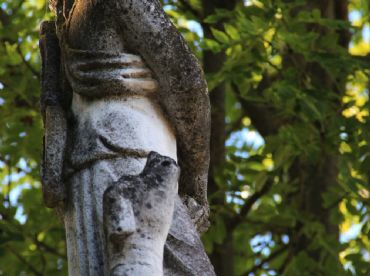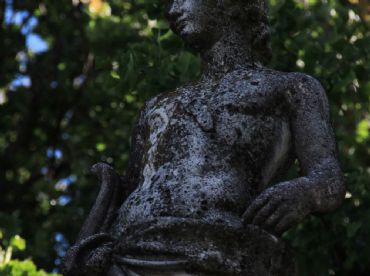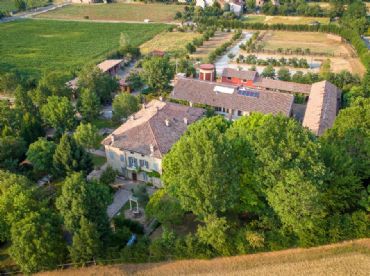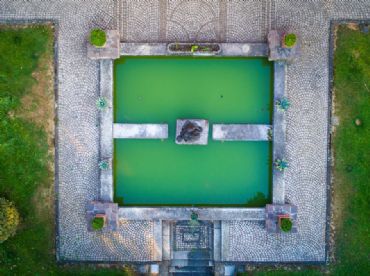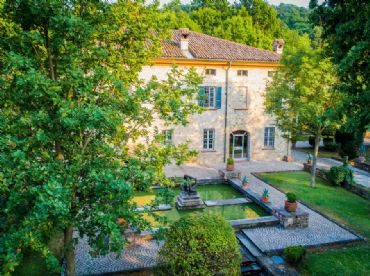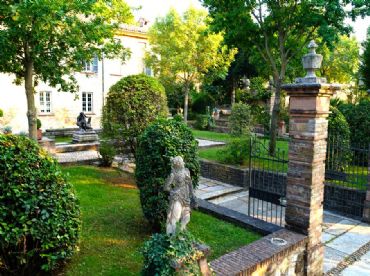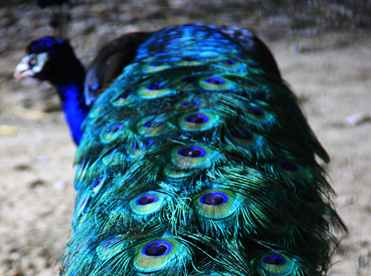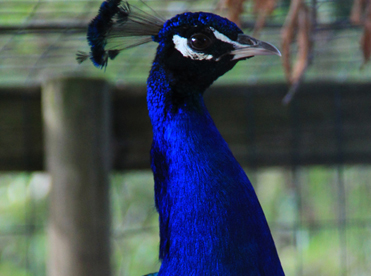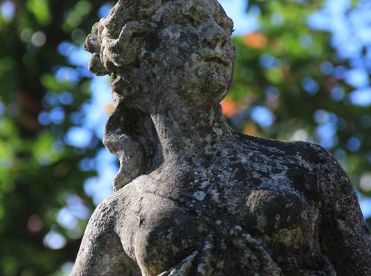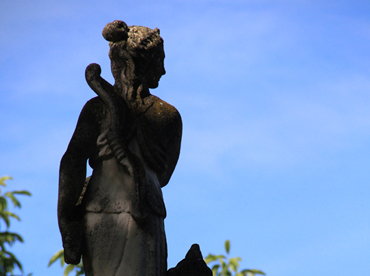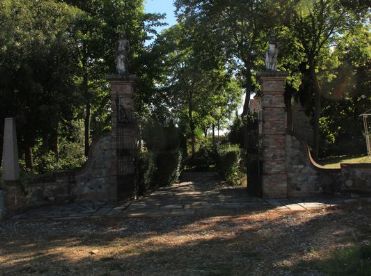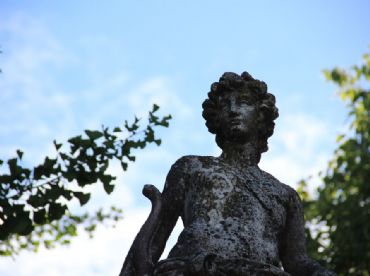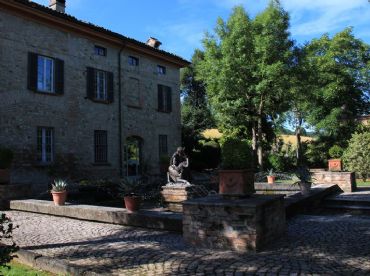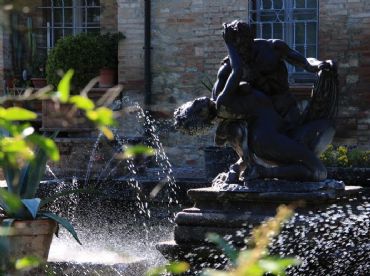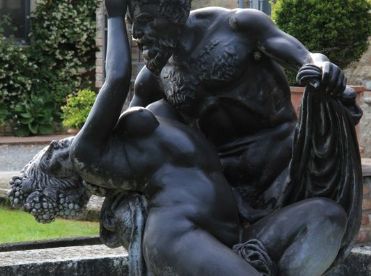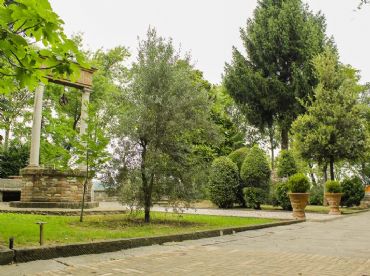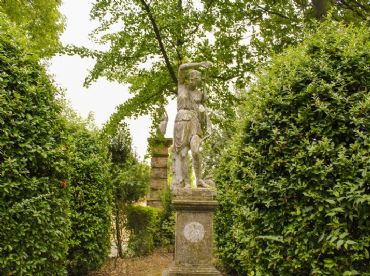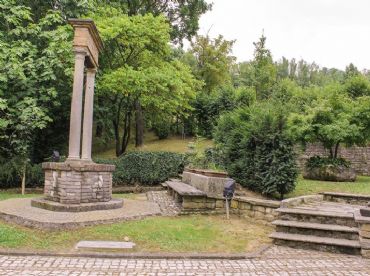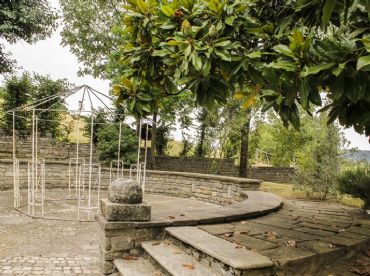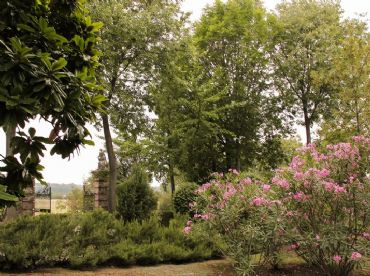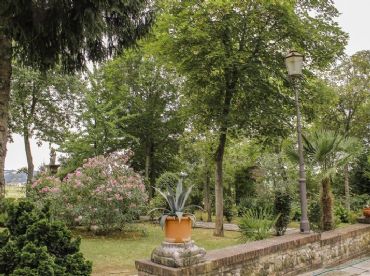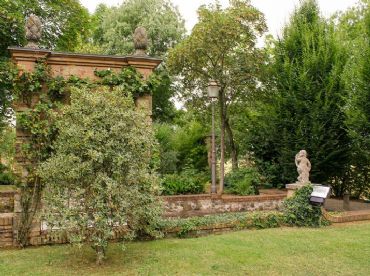The Garden
The avenue leading up to the Estate is made up of two rows of shady
common walnut (Juglans regia L.), interspersed with yucca (Yucca
filamentosa L.) and Thuja (Thuja spp. L.). The Palace was embellished with an
Italian-style Garden and an English-style Park in the nineteenth
century, when the edifice was definitively transformed into a villa and
the animal holding facilities for breeding purposes were built (cf.
Historical stable, today transformed into an Agritourism).
The Italian-style Garden extends in front of
the main façade, and is composed of two wide symmetrical lawns. Its
plant emergences are: English oak (Quercus robur L.), European ash
(Fraxinus excelsior L.), holly (Ilex aquifolium L.), oval-leafed privet
(Ligustrum ovalifolium L.) and common box (Buxus sempervirens L.), in
addition to eden rose varieties, variegated ivy and clematis.
The square-shaped fish pond, overlaid with
prized granite, is decorated with an eighteenth-century bronze statue
depicting the abduction of a Nymph, symbolizing the confrontation
between the beauty of the human soul and the brutality of the natural
instinct.
The English-style Park borders the south wing
of the property and is characterized by mixtilinear beds of common box
(Buxus sempervirens L, var. pumilla variety), botanical roses (Souvenir
de la Mal Maison, Eden, Provence et al.), bergenia, palms, bamboo and
olive trees. A hundred-year-old southern Magnolia (Magnolia grandiflora
L.) dominates the area near the seventeenth-century well, flanked by a
Judas tree (Cercis siliquastrum L.) with its blatant spring blossoms. Swamp-rose Mallows, nymphaeas and lotus
flowers mark the different bodies of water fashioned out of granite
drinking troughs, as well as the magnificent fountain, and unite the
park with the landscape area with its specimens of northern red oak
(Quercus rubra L.) and great sessile oaks (Quercus petraea L.).
A long avenue joins the complex to the cultivated area: cypress oaks
(Quercus fastigiata L.) are interspersed with mellow white mulberries
(Morus alba L.); thus forming a succession of towering shadows which
seems to reach for infinity, yet leads to a pond for collecting
rainwater: a veritable jewel of biodiversity.
Book your living room
Accommodation in rooms with private bathroom,
breakfast is always included!




